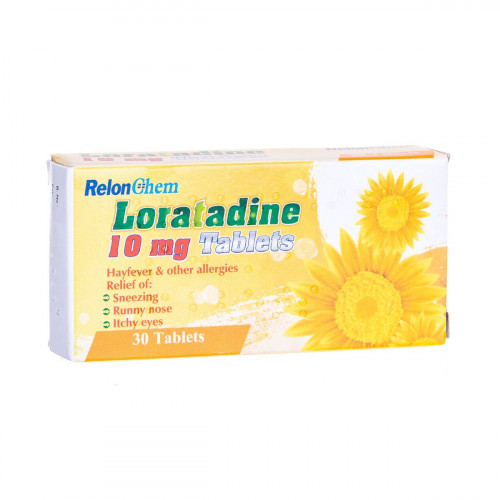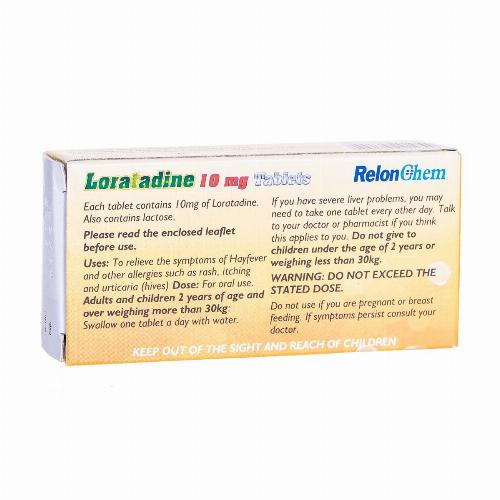Loratadine
Loratadine is an effective treatment that works for both seasonal allergies, and allergies that occur all year round, this can include allergic reactions from a runny nose to watery eyes. Loratadine is known as a non-drowsy antihistamine, which means it is much less likely to make you feel tired or sleepy than other antihistamines. This makes it ideal for those who need to relieve their symptoms whilst they go about their daily life.
-
${ slotProps.product.price }$
Product not found, please try a different combination

All inclusive service
No hidden fees

Free Tracked Delivery
Delivered in plain packaging

Prescription included
Via our online consultation
Product Description
How does Loratadine work?
Loratadine belongs to a type of medicine called an antihistamine, which blocks a substance known as histamines that are produced by the body when certain allergens cause you to have an allergic reaction. Whilst your body is trying to protect you by making these histamines, it can cause some unpleasant symptoms which are quite uncomfortable to live with.
What can Loratadine help with?
Loratadine is an antihistamine which is used to treat:
- Hay fever
- Eczema
- Conjunctivitis
- Hives
- Allergic reactions to insect bites and stings
- Some food allergies
How do you take Loratadine?
When taking Loratadine you should always follow the enclosed patient information leaflet that is given to you before using the medicine.
You should take the tablets with water, but you can take them with or without water.
The recommended dosage for adults over the age of 12 is one tablet a day. The tablets can be taken by children under the age of 12 but they must weigh at least 30kg’s, and the dosage will still be one a day.
When to take Loratadine:
You may only have to take loratadine on a day where you experience symptoms, for example if you have been exposed to an allergen such as animal hair. To prevent seasonal symptoms such as hay fever you may need to take it daily to prevent allergic reactions.
If you forget to take a dose of loratadine take it as soon as you remember, unless it is nearly time for your next dose. Do not take a double dose to make up for a missed dose.
Are there any side effects of Loratadine?
Although many side effects are mild, some people do experience symptoms associated with taking Loratadine. However, most people who suffer from the side effects find that they would rather live with the side effects than live with the condition that loratadine treats. We are going to list some of the common side effects that are associated with the medication, though you should always read the patient information leaflet to familiarise yourself with all of the possible symptoms. The most commonly reported side-affects are:
- Swelling of the face and throat
- Skin rash with itchy, red, swollen skin
- Wheezing
- Chest or throat tightness
- Difficulty breathing
- Drowsiness
- Nausea
- Dizziness
- Dry mouth
- Liver problems
- Hair loss
- Rash
- Nervousness in children
Can I take Loratadine?
Luckily, this is a medication that is generally well-tolerated, meaning that only people with severe disorders or certain allergies to ingredients that may be contained in the medication should avoid taking it. Some examples of conditions that might mean the medicine is unsafe to use are:
- You are allergic to Loratadine
- The patient is under 2 years of age
- Those with liver failure
- Those with an intolerance to sugars such as lactose or sucrose
- Those with epilepsy
If any of the above conditions apply to you, you should get in contact with your GP or pharmacist and ask for advice before starting your treatment with Loratadine. There may also be other medications available to you that are more suited to your situation, or you might be advised to take extreme cautions when taking the medicine. Never take any medications if you have any concerns that it may affect you.
Whilst no severe interactions with other medications are reported, you should always report back to your GP or pharmacy and let them know that you are taking other medications. You should always read the patient information leaflet that comes with the medication to make sure you know what you can and cannot take with it.





